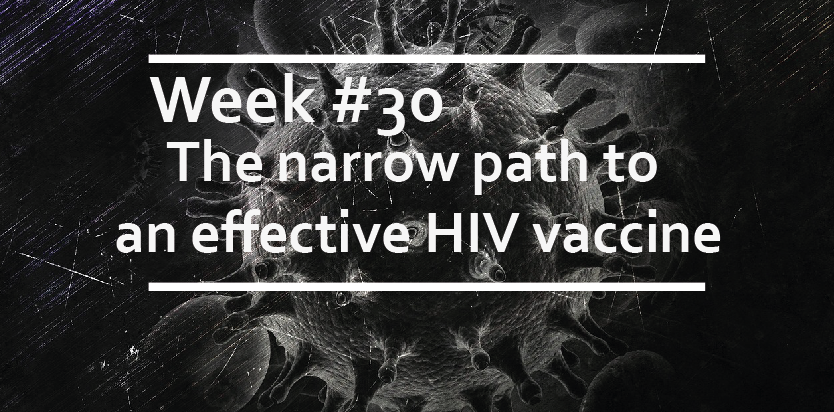The narrow path to an effective HIV vaccine
How HIV targets immunity
Human immunodeficiency virus (HIV) is a lentivirus that causes an infection of the immune system, eventually leading to acquired immunodeficiency syndrome (AIDS). HIV specifically infects and depletes CD4+ T cells that normally coordinate the adaptive T- and B-cell response against intracellular pathogens, which is why HIV is considered an immunosuppressive virus.
AIDS is a major health problem everywhere in the world, which has been worsened by the rapid emergence of drug resistance. Therefore, there is an urgent need for an effective anti-HIV vaccine. Despite substantial advances in our knowledge of the immune response against HIV and its evolution within the host, we still have no effective way of protecting against HIV.
During the early phases of the HIV epidemic, it was assumed that induction of neutralizing antibodies against the virus was enough to initiate and support immune protection. Although neutralizing antibody levels typically correlate with greater protection against viral pathogens, data from clinical trials have made it clear that antibody levels alone do not always result in protection against HIV.
More complex mechanisms are at a play
Following the course of a natural infection, HIV triggers antibodies, cytotoxic T cells, and CD4+ T helper immune responses. Although a strong antibody response is mounted, only 10–20% of infected individuals can mount a B cell response leading to the production of broadly neutralizing antibodies. Neutralizing antibodies can block the biological activity of the virus, thereby preventing or controlling viral replication. However, the majority of the antibodies produced are non-neutralizing (they bind to the virus but fail to prevent infection). These functional non-neutralizing antibodies exert an alternative mechanism of protection by recruiting innate immune mechanisms and cytotoxic natural killer (NK) cells to direct the killing of virus-infected cells (antibody-dependent cell-mediated cytotoxicity, ADCC). This mechanism, known to be important in the clearance of tumor cells, also seems to increase protective immunity against HIV.
Also, CD8+ T cellular immunity plays a role in controlling HIV disease progression. HIV-specific CD8 cytotoxic T lymphocytes (CTLs) are found in large numbers in clinical samples from infected patients and inhibit HIV replication in vitro by multiple mechanisms, including direct lysis of infected cells and inhibition of viral replication by interleukin or chemokine secretion.
These findings, that are the results of comparing the vaccine-induced immune antibody responses among various trials, have shed some light on our still-limited understanding of the potential mechanisms of protection:
1) Although induction of strong cytotoxic T cell activity has been correlated with a reduction in viral load, a vaccine designed to induce T cell immunity has shown no protection against infection. More alarmingly, the vaccine appeared to increase the rate of HIV infection in individuals with prior immunity against the adenovirus vector used in the vaccine.
2) Although monoclonal antibodies that recognize critical neutralizing epitopes have been shown to confer effective protection against HIV in passive transfer experiments, vaccines designed to induce high levels of virus-specific antibodies demonstrated no significant protection in the study population as a whole.
3) When vaccines showing a modest level (31%) of protection in humans were finally identified, suprisingly, these did not include the production of neutralizing antibodies and didn’t elicit a strong cytotoxic T cell response. Rather, these antibodies seem to recruit innate immunity mainly via the engagement of NK cells by ADCC.
Thus, it seems that induction of neutralizing antibodies or T-helper cell response alone is insufficient for inducing long-term control of viral replication. However, the combination of humoral, cellular, and T-helper cell responses seems to be needed for broad and durable protection against HIV.
In their review, Alter and Barouch warn that the principle of designing a vaccine against HIV will likely involve the induction of neutralizing antibodies together with functional non-neutralizing antibodies, thereby engaging multiple arms of immunity to clear the virus.
Broadly neutralizing antibodies for vaccine design
Interestingly, some individuals that remain disease free for many years after HIV infection develop strong broadly cross-reactive neutralizing antibody responses, which might contribute to their ability to control the infection. Broadly neutralizing antibodies cover 50 to 90% of transmitted viruses and, therefore, have been the goal of vaccine development efforts.
Efforts are in progress to design novel envelope immunogens that might induce effective neutralizing responses: this requires optimization of the envelope structure (the most important target for induction of antibodies against HIV) to expose appropriate neutralizing epitopes and mask non-neutralizing epitopes. The emergence of neutralization escape mutants is a problem: the envelope can tolerate multiple mutations and the virus is under intense selection pressure to mutate neutralizing epitopes without compromising functional aspects, such as receptor binding.
Once a potent HIV envelope structure has been identified, much effort is needed to
increase effectiveness. This is generally done through the use and selection of adjuvants or glycan engineering, to improve immune durability and guide the evolving B cell response to broad neutralization.
Functional non-neutralizing antibodies
Because infection can occur via the transfer of either free virus or cell-associated virus, neutralizing antibodies might have little impact on preventing infection by an infected cell, and thus mechanisms beyond neutralization are likely to be essential to achieve complete protection from HIV infection. Non-neutralizing antibodies can recruit multiple innate immune functions to drive the destruction of pathogen-infected cells, including ADCC, antibody-dependent cell-mediated phagocytosis (ADCP), and complement-mediated cytotoxicity, as well as steric inhibition of proteins important in viral replication, regulation of inflammation, and promotion of highly effective T cell immunity via antigen presentation. Approaches to improve the functions of non-neutralizing antibodies focus on enhancing prime-boost strategies geared to fine tune the support coming from T cells and innate immunity.
It remains difficult to attribute a predominant role to one of the discussed mechanisms over the others, as it is likely that several are involved simultaneously, synergistically or even antagonistically.




